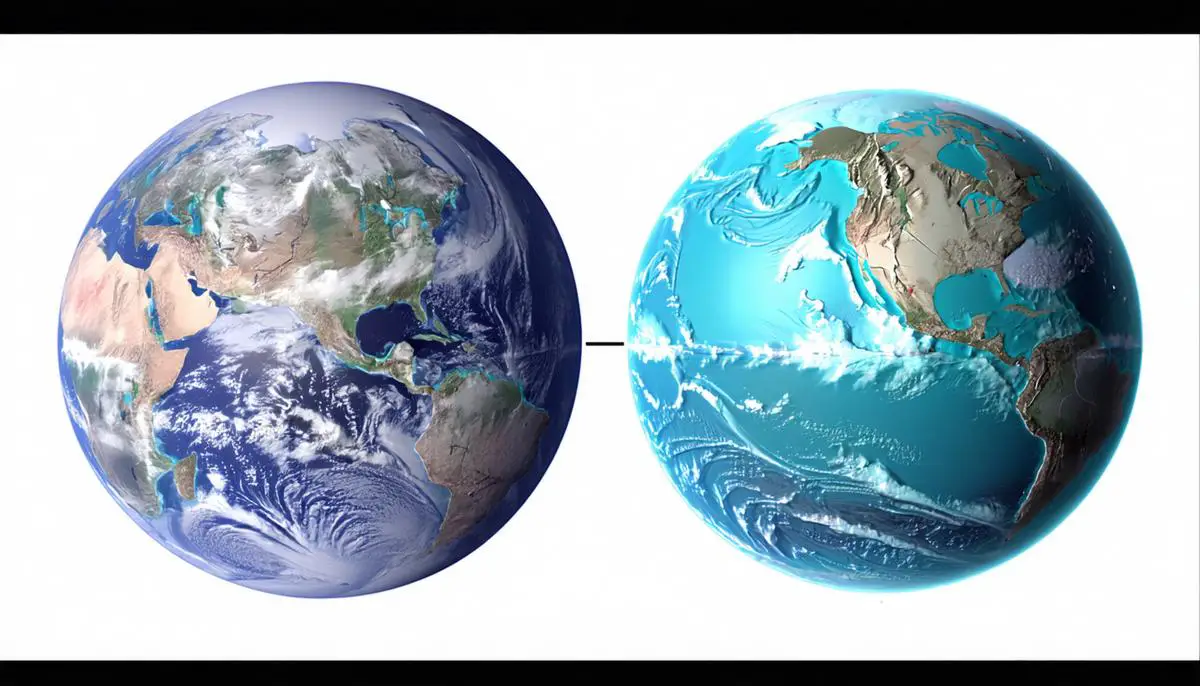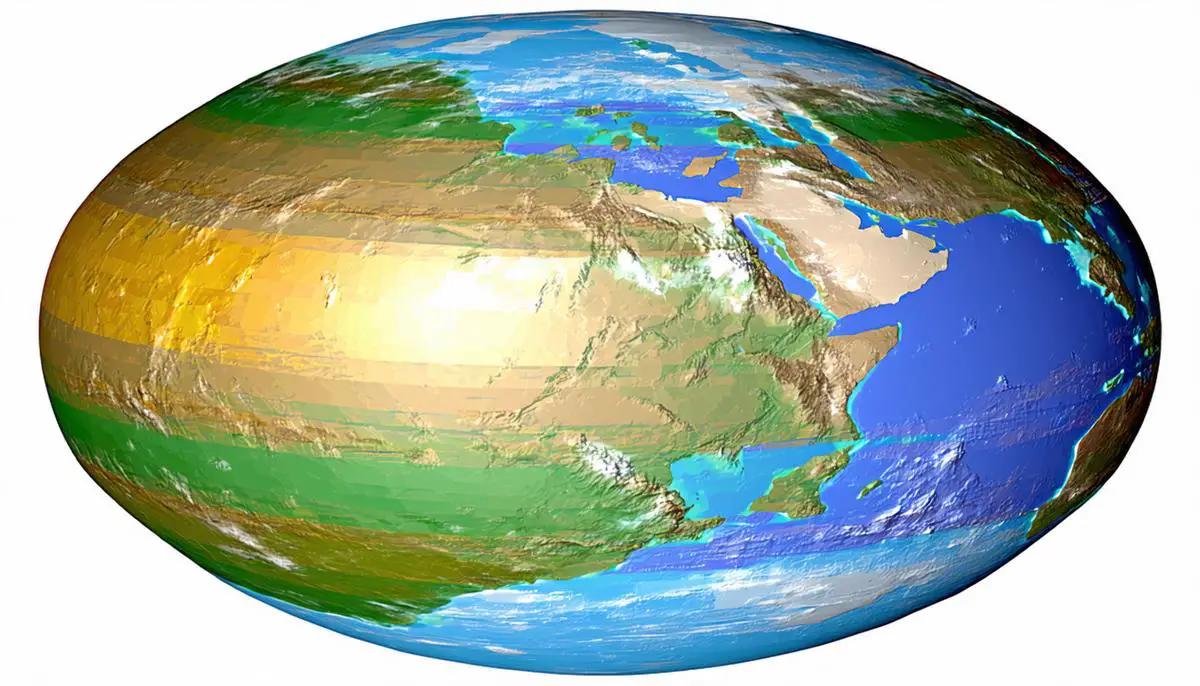Earth's Rotation and Gravity
The Earth's spin creates a bulge at the equator, turning our planet into an oblate spheroid. As a result, gravitational force dips slightly at the equator and peaks at the poles. This bulge stems from centrifugal forces due to Earth's rotation, spreading the mass outwards and slightly weakening gravity's grip at the equatorial region. The further a spot is from the Earth's center, the weaker the gravitational pull—hence the slight variation at different latitudes.
The spinning action also introduces centrifugal force, which is like a gentle tug away from the Earth's surface. Standing at the equator? You're experiencing the strongest pull compared to anywhere else. The centrifugal push, ever so slightly, reduces the overall gravitational feel.
The planet's rotation also plays a role in timekeeping. The ice melting in Greenland and Antarctica—due to global warming—affects Earth's angular velocity. This shift lengthens our days, though the change is minimal. The redistribution of mass from melting ice to ocean waters alters Earth's rotation speed, potentially requiring an adjustment in our timekeeping through a "negative leap second."
Satellite data provides a clearer picture of these shifts. Geophysical forces—like the interactions between Earth's iron core and its rocky mantle—also influence this rotation. These interactions can slow down or speed up sections of the Earth, altering how we understand time and gravitational force. While gravity itself remains constant, these dynamic changes in mass distribution affect how it's perceived.

Impact of Ice Melt on Earth's Angular Velocity
The rapid ice melt at the poles is more than just a climate concern; it subtly affects Earth's angular velocity. As ice in Greenland and Antarctica melts and contributes to rising sea levels, their mass moves from polar areas closer to the equator. This redistribution of mass changes the weight distribution on Earth, causing a slight slowdown in its spin.
This shifting of ice masses stretches the length of our days by a few milliseconds. While minimal, this change is significant enough for cosmic timekeepers to consider the notion of a "negative leap second" to maintain accurate timekeeping.
Effects of Ice Melt:
- Redistribution of mass from poles to equator
- Slight slowdown in Earth's spin
- Lengthening of days by milliseconds
- Potential need for timekeeping adjustments
The change in angular momentum reflects the interconnectedness of Earth's natural and geophysical processes. The core, mantle, and crust participate in a complex interplay, where each movement affects time itself. Satellite observations capture these subtle shifts, illustrating how global warming is literally changing the way we experience time. These changes in angular velocity demonstrate Earth's ongoing evolution and the delicate balance we share with our planet.

Centrifugal Force and Gravitational Perception
Earth's rotation generates centrifugal force—an outward push that competes with gravity. This force is most pronounced at the equator, where Earth's surface spins fastest. While the actual gravitational force remains constant due to Earth's mass, the experienced pull is slightly diminished at the equator compared to the poles due to this centrifugal effect.
At the poles, where rotation speed is minimal, centrifugal force fades, leaving gravity more prominent. In contrast, the equatorial regions exemplify a delicate equilibrium between these forces.
This gravitational nuance raises intriguing questions about our planet's dynamics and how these forces interact to shape our daily lives.
While centrifugal force might seem an esoteric concept, it continuously shapes our environment. From the equator's subtle gravitational quirk to its broader implications for global physics, this force invites us to observe the intricate workings of our planet. As we go about our lives, Earth's spin and its resulting centrifugal force remind us that even unseen forces significantly influence the world we know and experience.
As we consider the intricate interplay of forces shaping our planet, Earth's rotation and its gravitational nuances demonstrate the delicate balance that governs our daily lives. This subtle interaction between centrifugal force and gravity highlights the profound connections within our natural world, inviting us to appreciate the complexity of what might seem like simple phenomena.
- Buis A. Why a Warming Arctic May Be Causing Colder U.S. Winters. NASA Global Climate Change.
- Loomis BD, Rachlin KE, Luthcke SB. Improved Earth Oblateness Rate Reveals Increased Ice Sheet Losses and Mass-Driven Sea Level Rise. Geophysical Research Letters.
![]()
